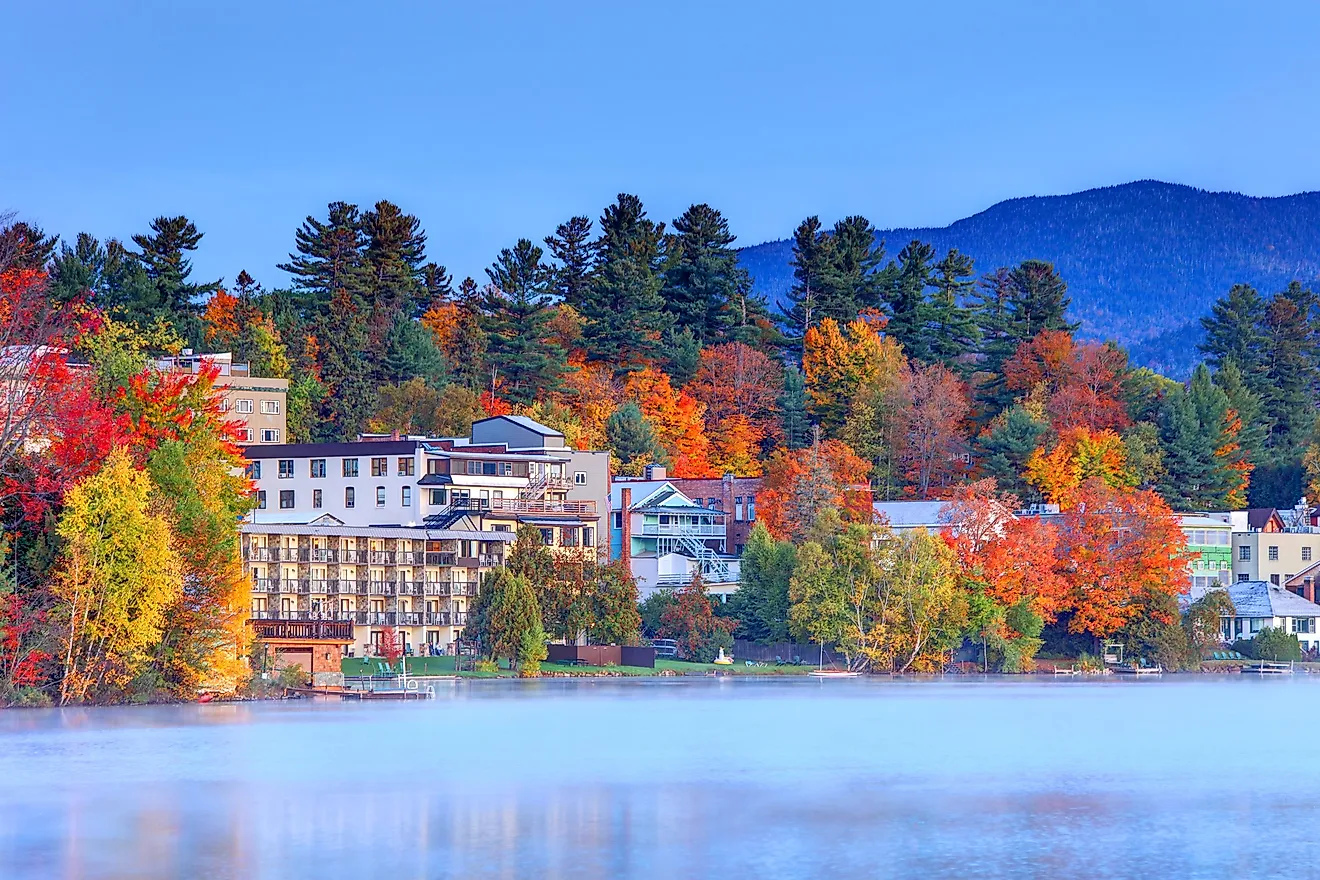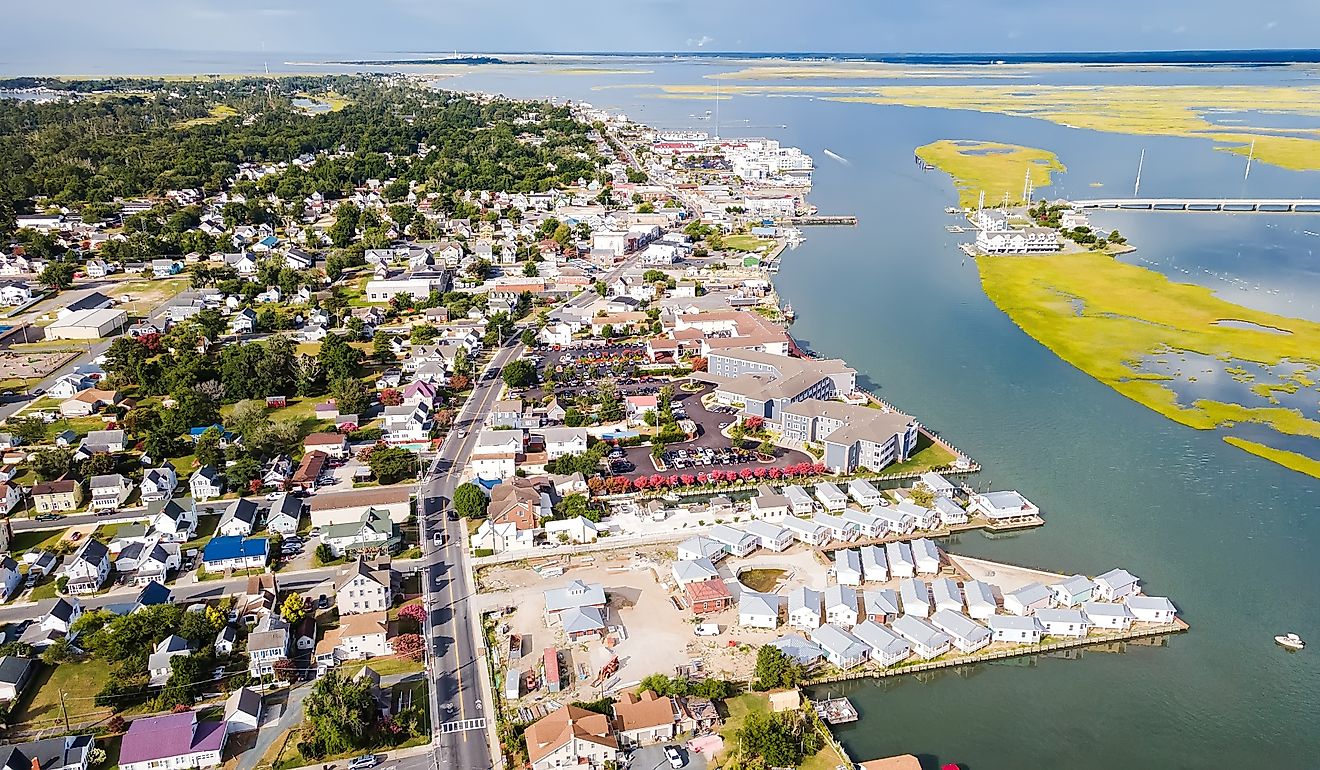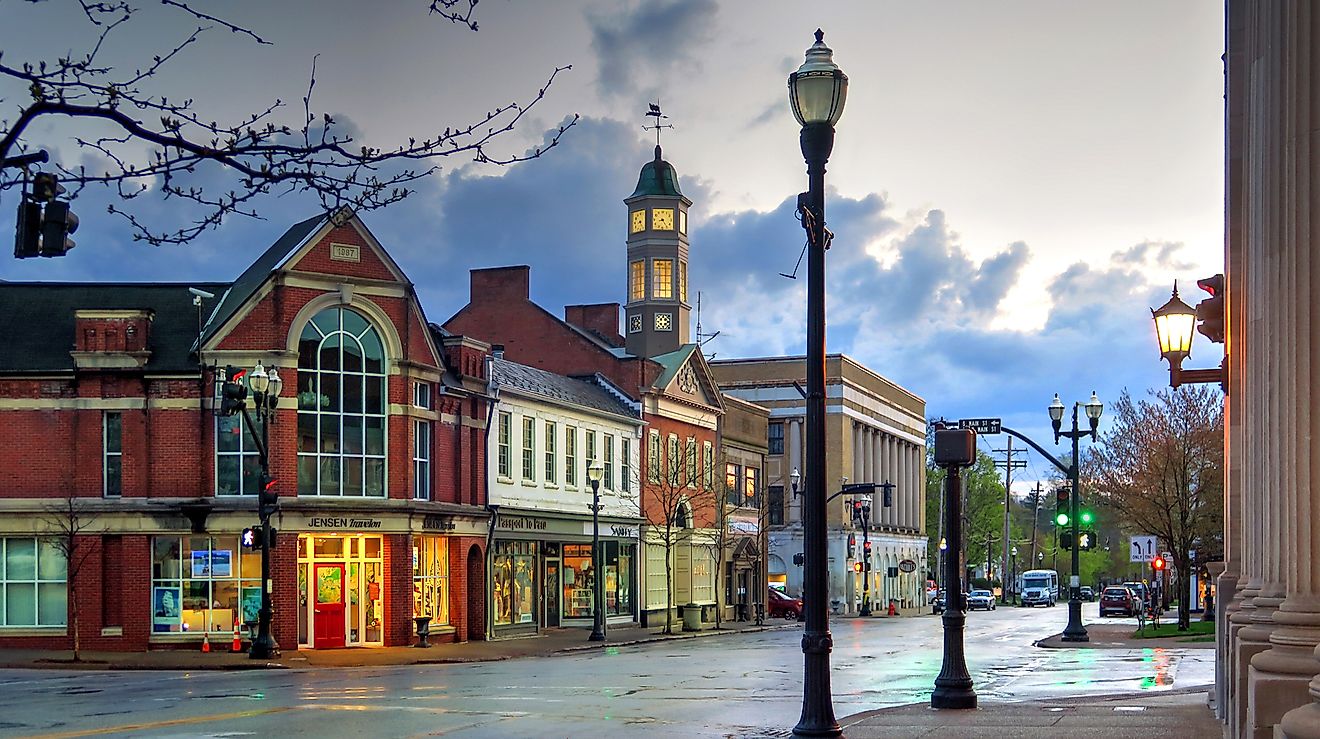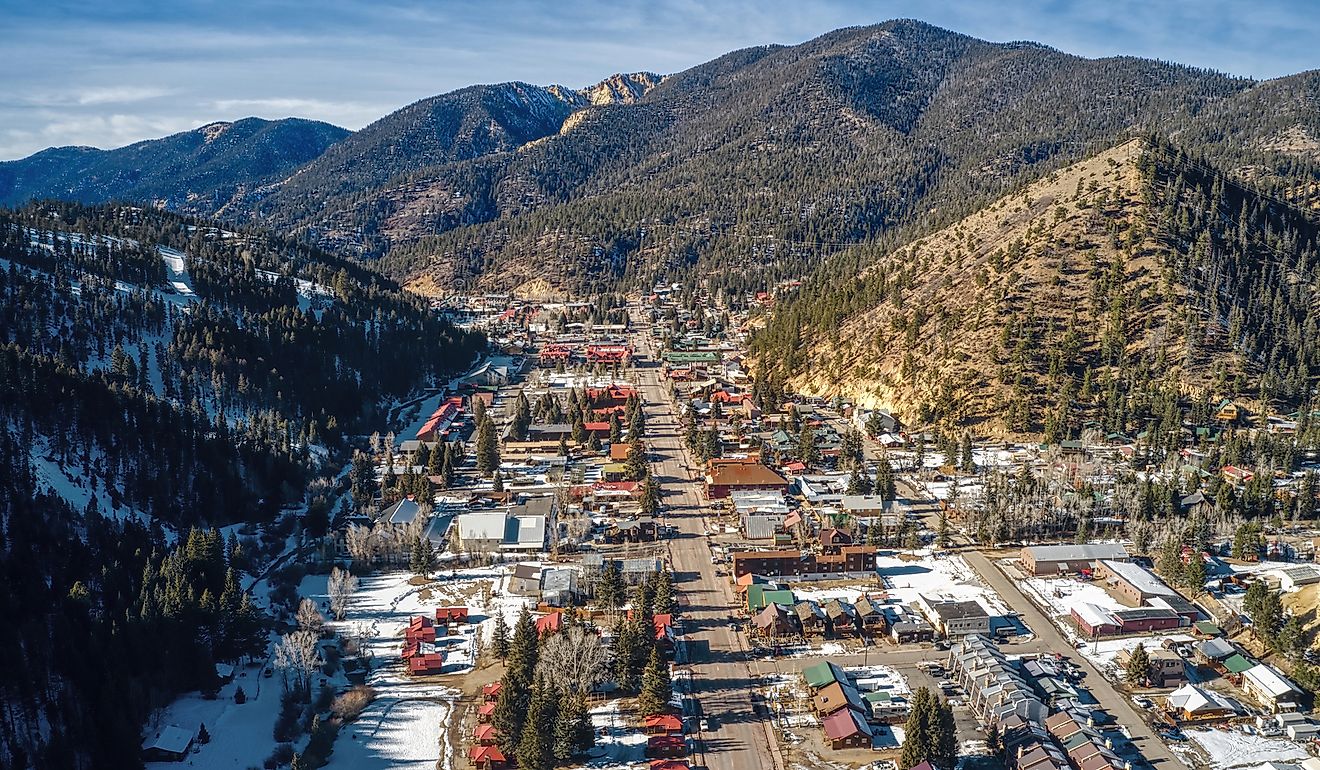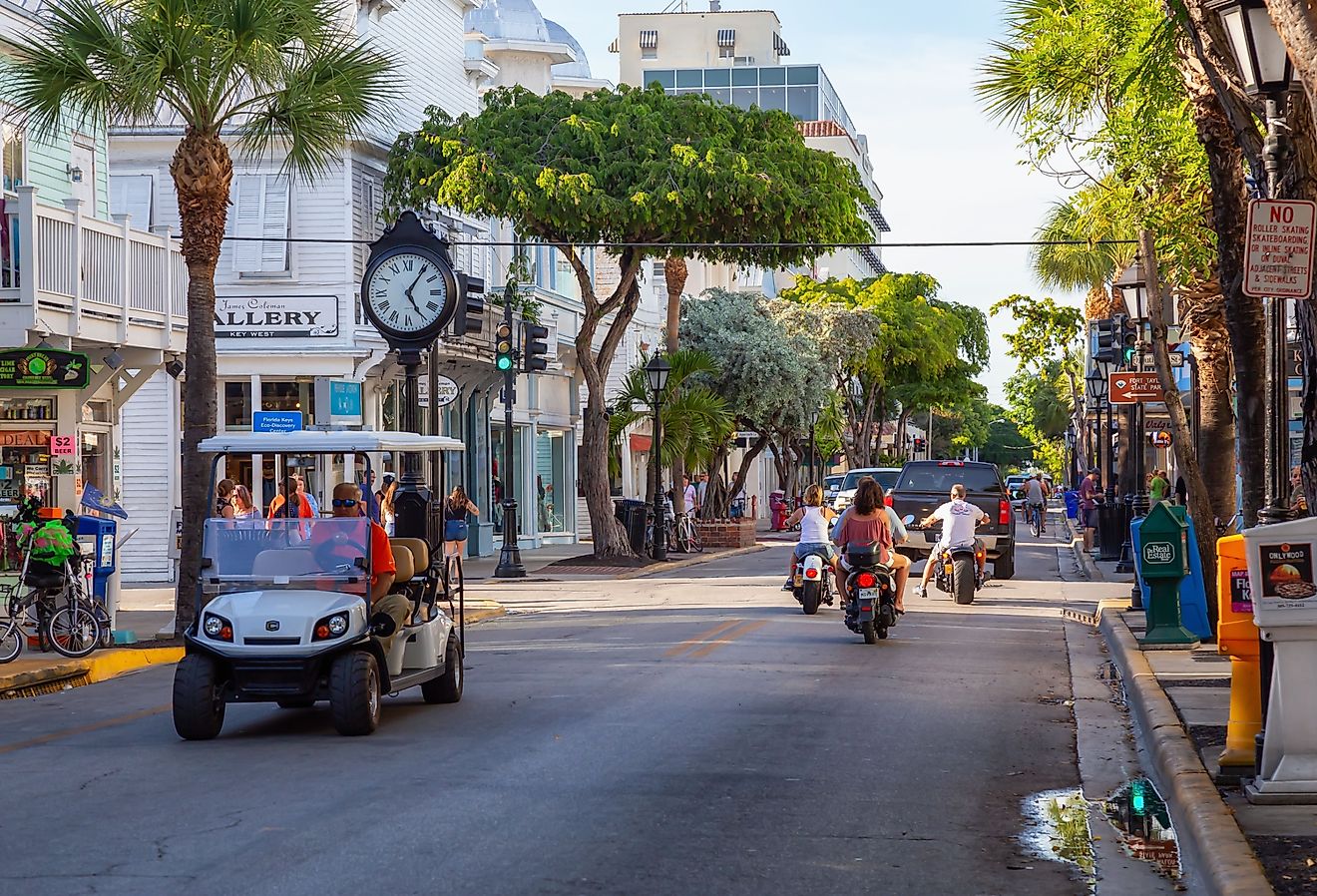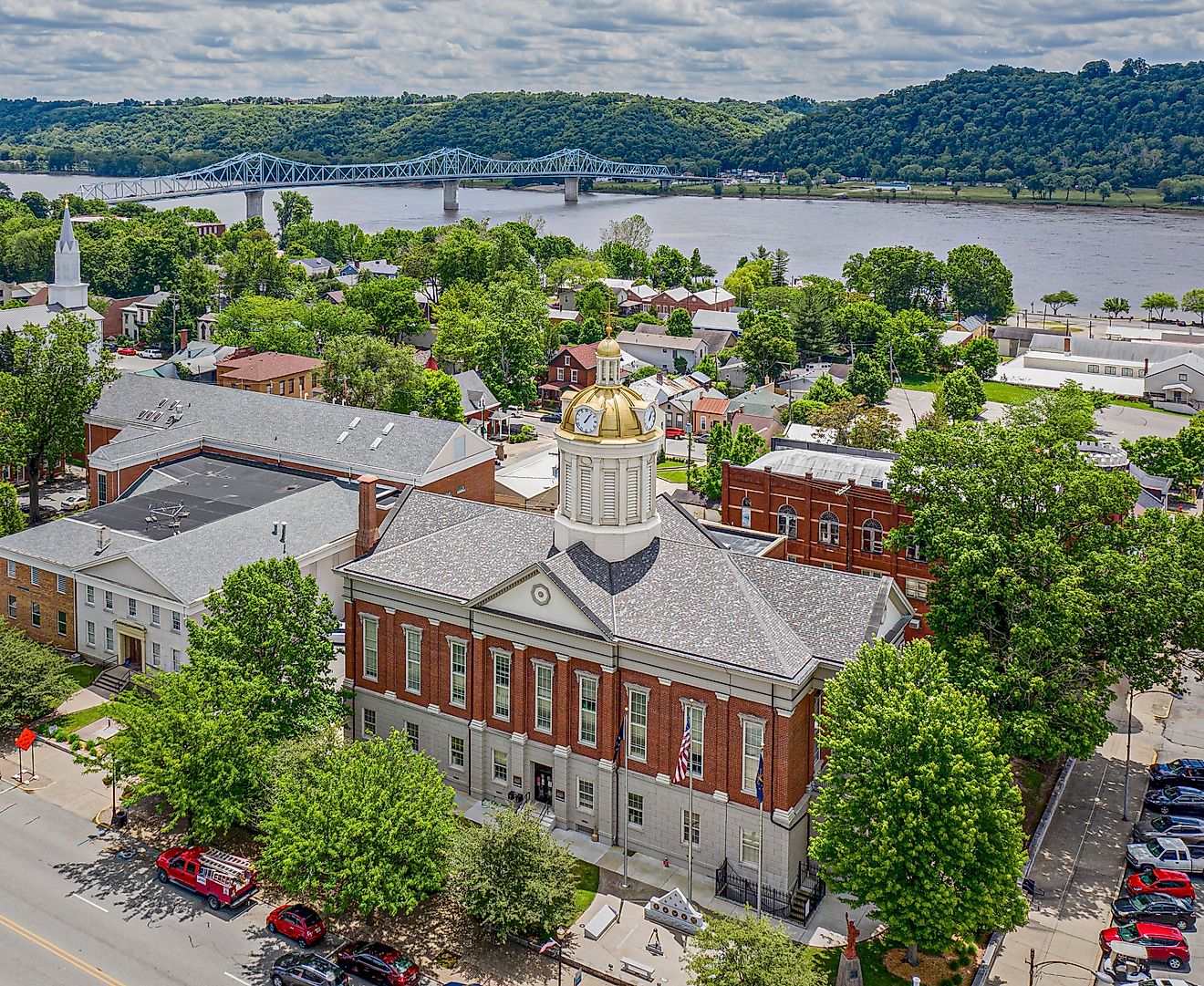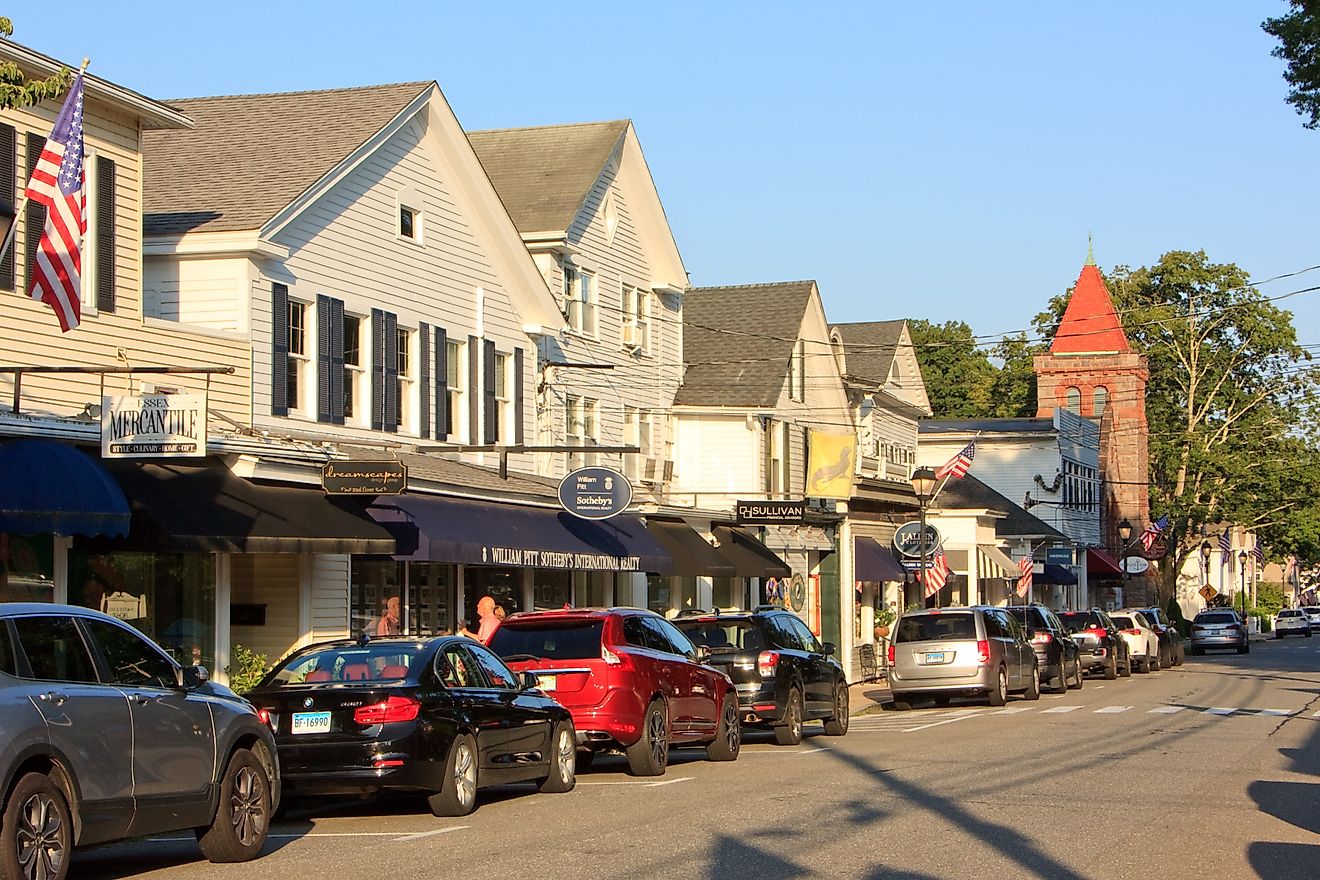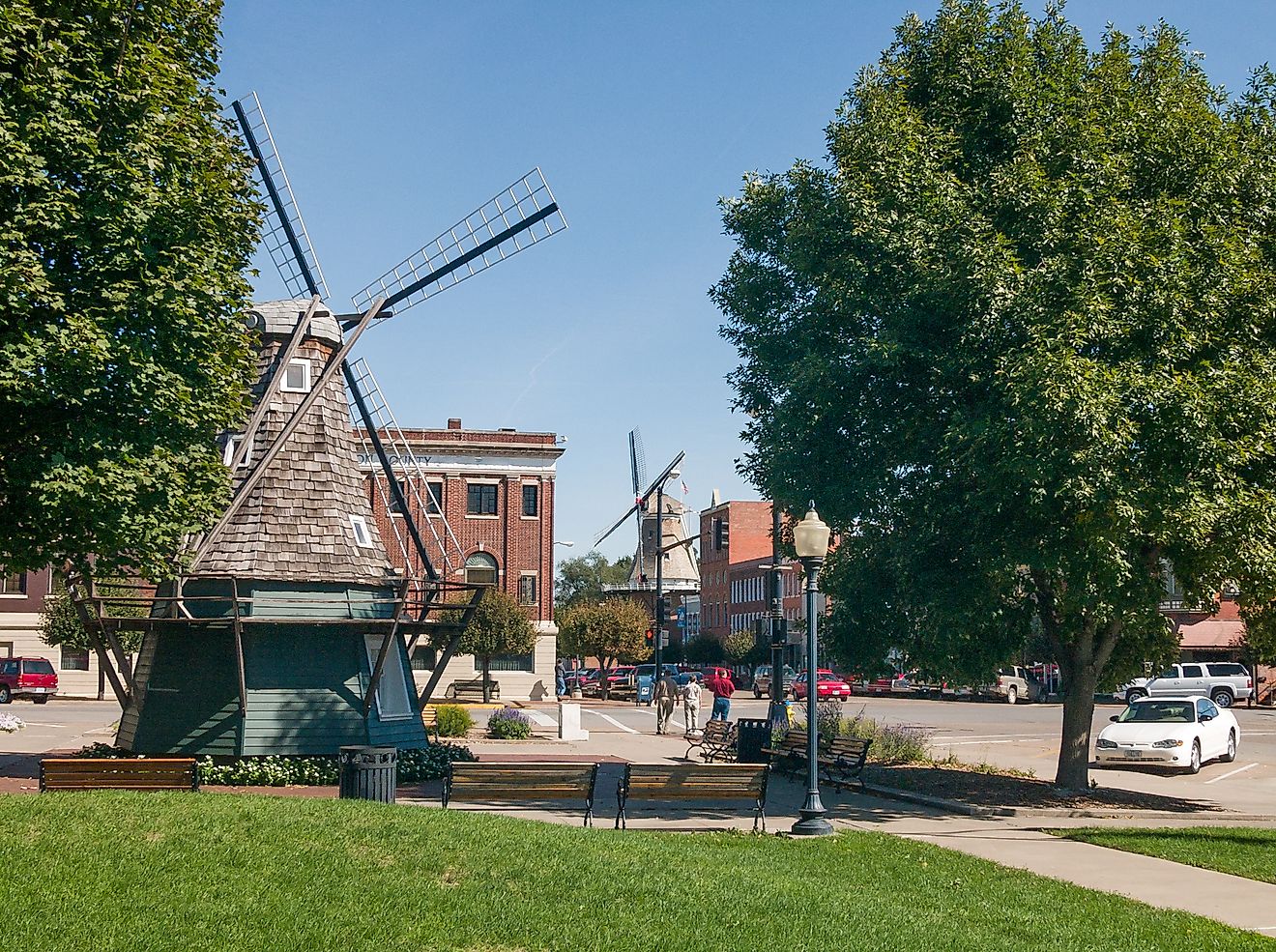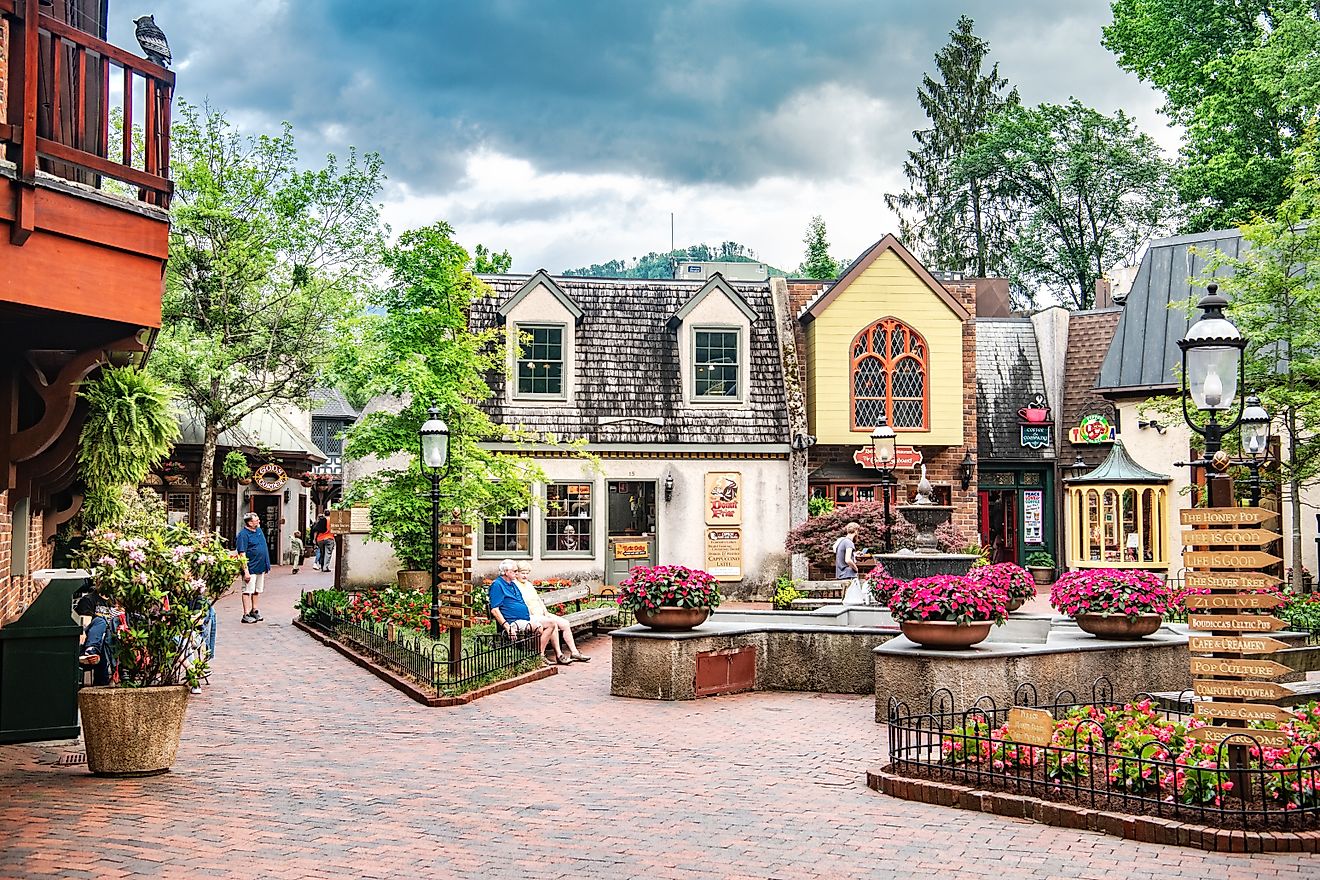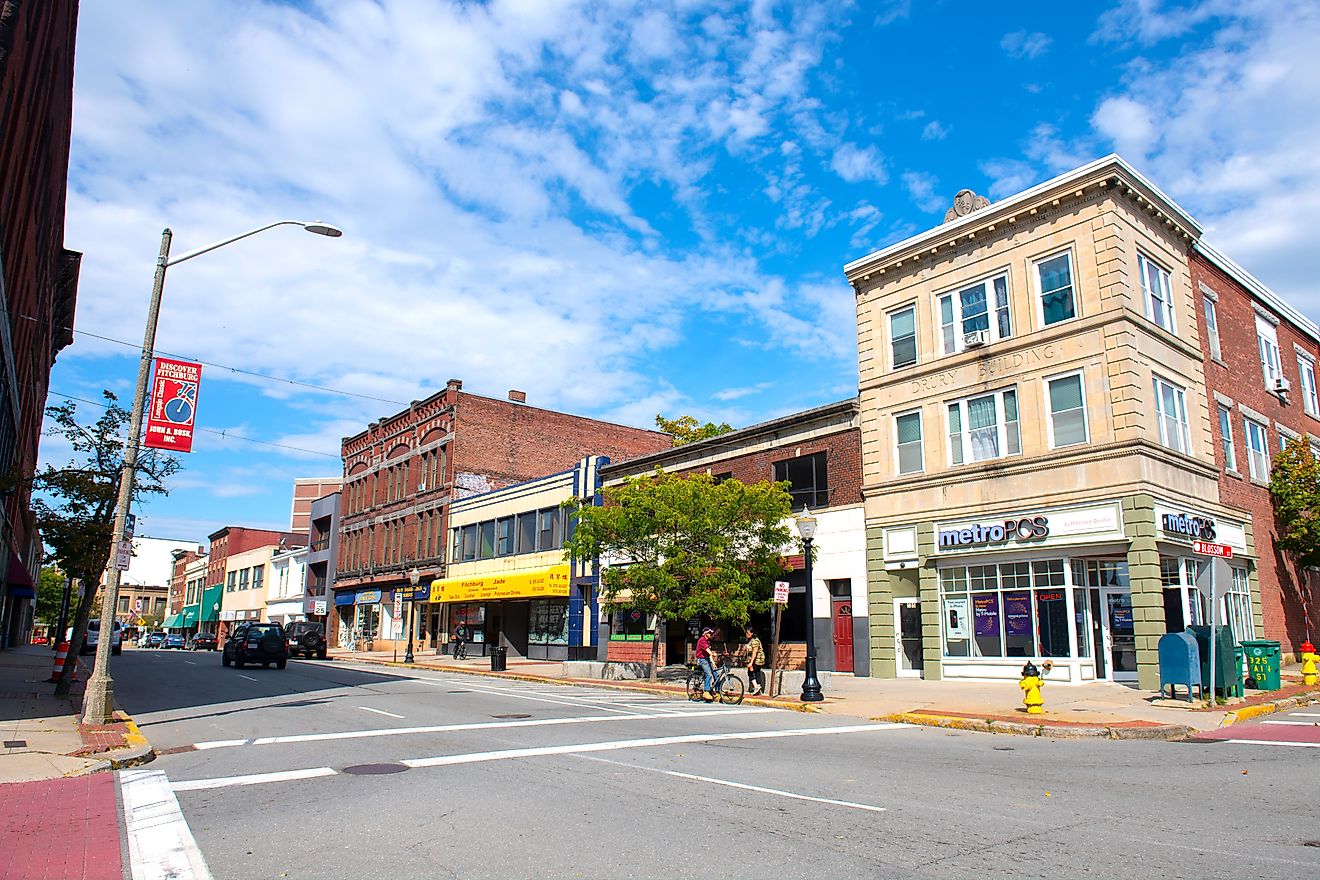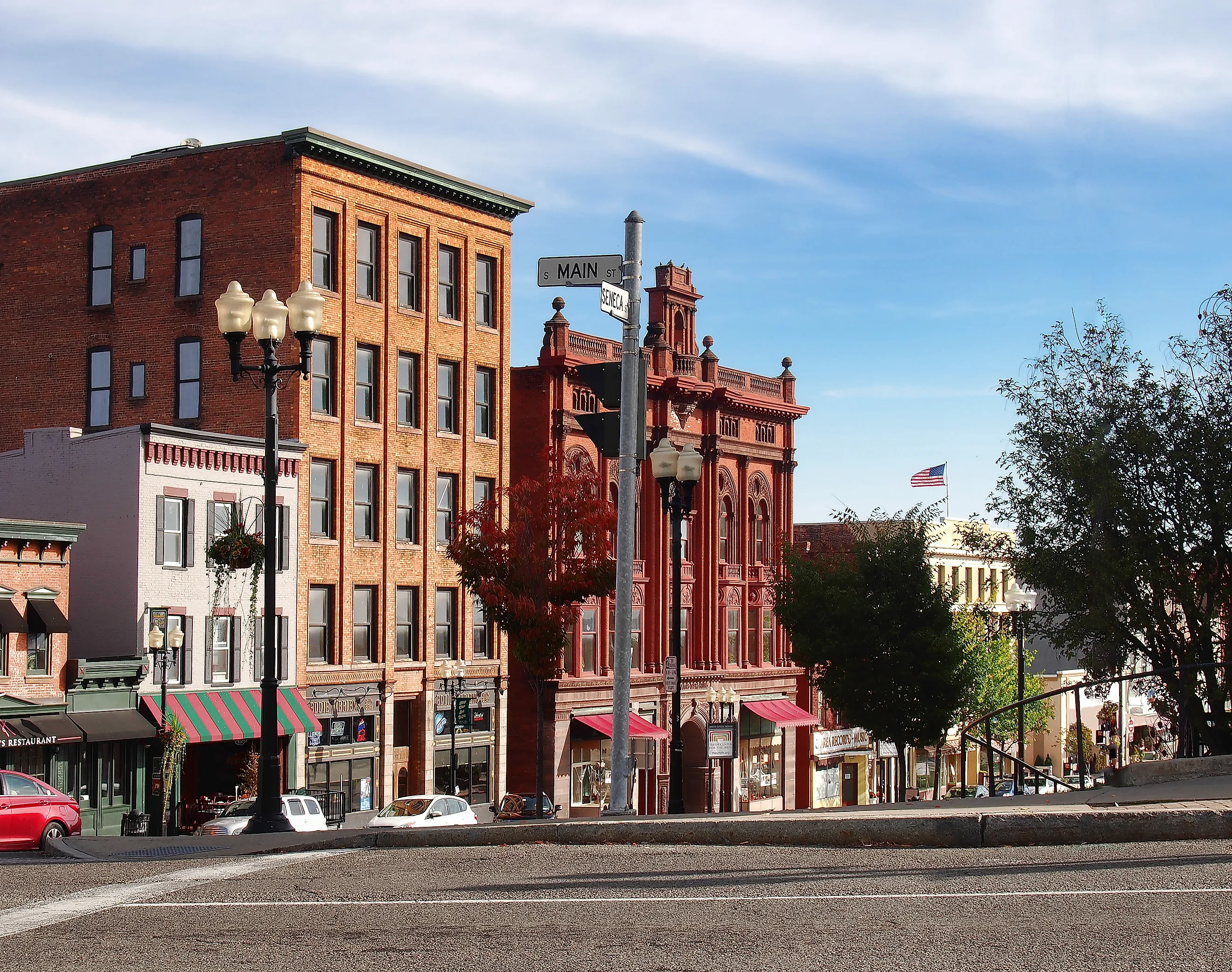
10 Cost-Effective Retirement Towns In New York
Retirement math in New York changes the moment the map narrows to canal towns, lake ports, and college hamlets. Think of this list as a small-town portfolio: low buy-in, low volatility, steady dividends: walkable cores, everyday services, and public parks, without the premium that shadows bigger zip codes.
Ten towns, one premise: stretch a fixed income where the costs are grounded, the amenities are concrete, and the identity is already built into the street grid!
Binghamton
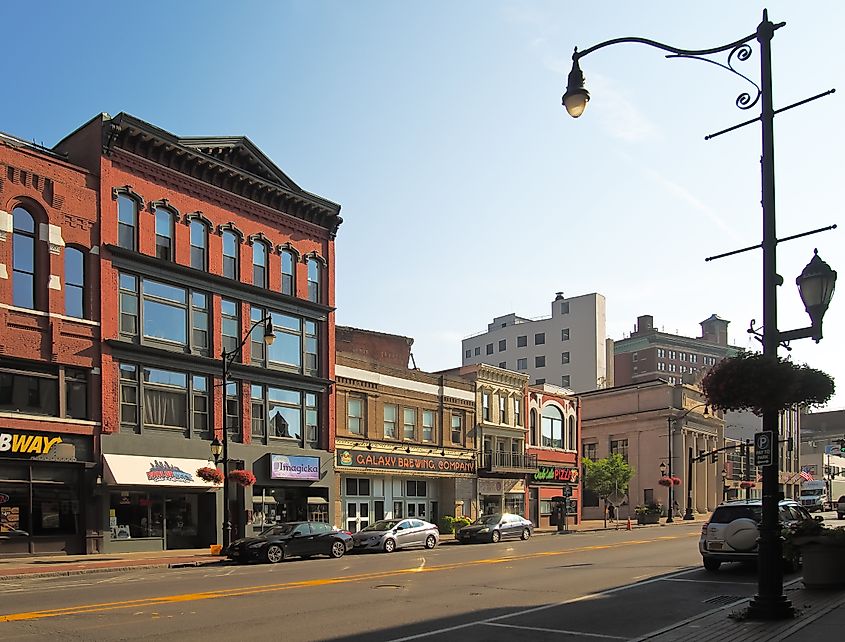
Binghamton stands out for its rare identity as the carousel capital of the world; six antique carousels operate here, all donated by George F. Johnson, a shoe magnate who believed in accessible leisure for working-class families. The city’s industrial roots shaped its neighborhoods, many of which now offer retirees affordable real estate, with a median house price of $179,175. Binghamton also benefits from its location at the confluence of the Susquehanna and Chenango Rivers, offering scenic views without the tourist traffic of more famous upstate towns.
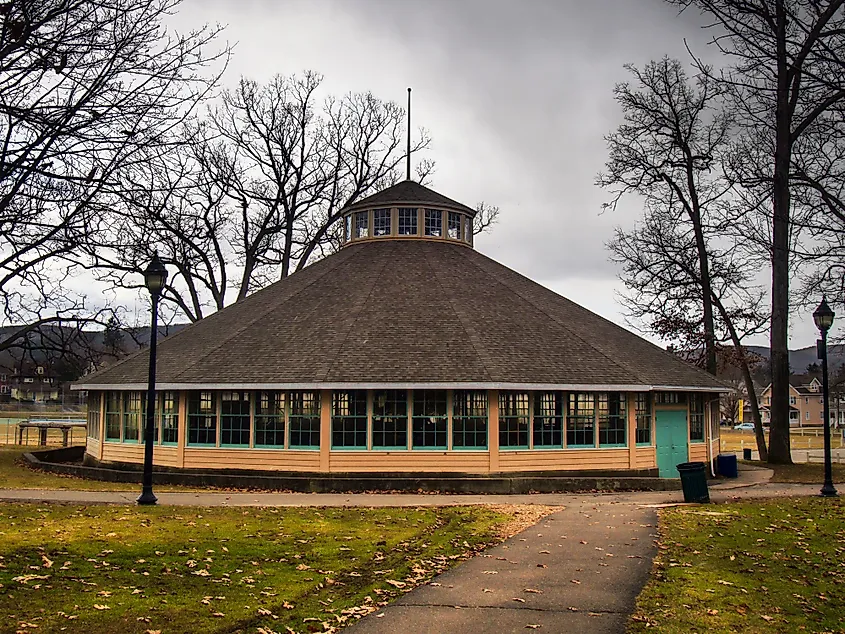
Roberson Museum and Science Center anchors the city’s cultural life with rotating exhibitions, a full-dome planetarium, and a historic mansion that once belonged to Alonzo Roberson, a lumber/box manufacturer. Recreation is centered around Otsiningo Park, a flat, paved riverside loop popular with walkers and cyclists. For brunch, retirees often favor Lost Dog Café on Water Street, known for its vodka rigatoni and kitschy art collection. Binghamton’s downtown remains quiet but walkable, with repurposed factories turned into galleries, cafés, and lofts, reflecting a steady effort to reinvent without erasing.
Elmira
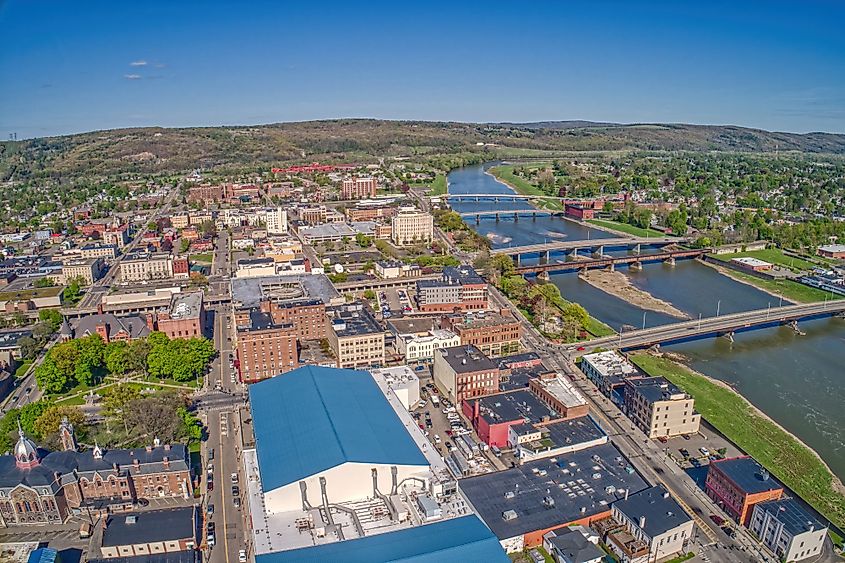
Elmira is one of the few towns in America where you can visit the exact hilltop where Mark Twain wrote Adventures of Huckleberry Finn. He summered here for two decades, and his octagonal study still sits on the Elmira College campus, preserved under glass. The town’s literary connection is paired with a Civil War past; Woodlawn National Cemetery holds one of the country’s largest Confederate burial sites north of the Mason-Dixon line. Elmira’s housing market remains well below the New York State median, with a median house price of $124,199, and its residential streets, lined with early 20th-century homes, offer solid value to retirees looking for walkability and low property taxes.
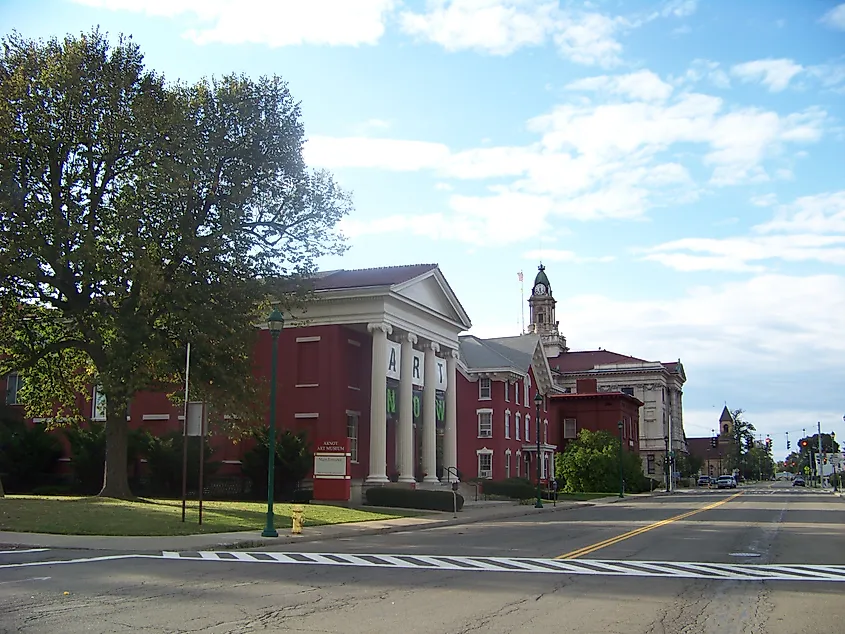
The Arnot Art Museum occupies a former mansion downtown and focuses on 19th-century European painting alongside rotating exhibitions of regional work. Eldridge Park, at the city’s edge, features a restored 1890s Looff carousel, a small lake for paddle boating, and summer concerts under a covered pavilion. Harris Hill, just west of town, is home to the National Soaring Museum and an active gliderport, offering rides over the Chemung Valley.
Jamestown
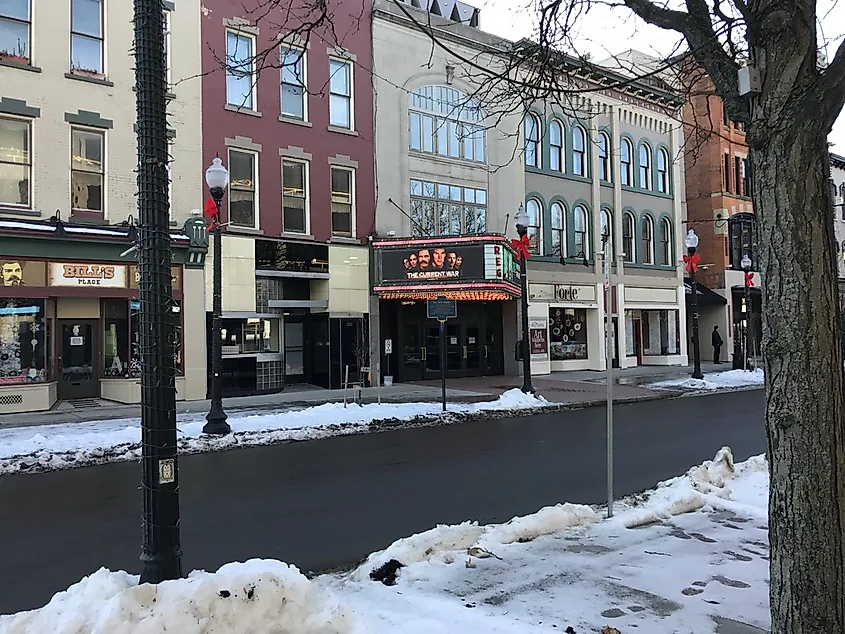
Jamestown is the hometown of Lucille Ball, and that identity runs deep. The downtown streets feature murals of classic I Love Lucy scenes. But what sets Jamestown apart isn’t nostalgia; it’s how the town has leveraged its cultural roots into an economic revival. The housing stock is made up largely of single-family homes priced far below the New York State median at $121,983, with inventory stable and turnover slow. Retirees benefit from proximity to Chautauqua Lake without the premium that comes with lakeside villages.
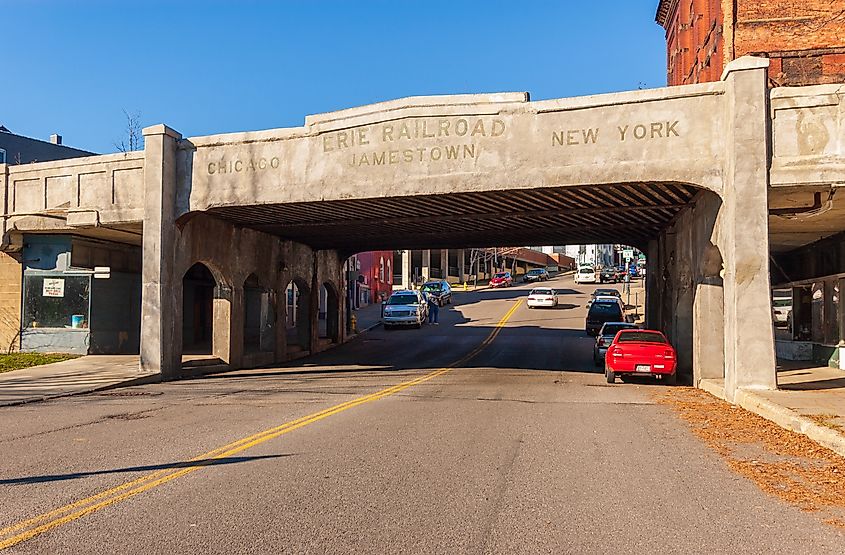
The National Comedy Center spans a converted railway station and houses over 50 interactive exhibits, including archival footage, holograms, and writing rooms that simulate a real comedy writer’s workflow. The Audubon Community Nature Center offers trails, birding blinds, and a three-story nature play area built from local timber. The nearby Roger Tory Peterson Institute, named after the famed naturalist and illustrator, maintains an art-focused gallery and nature preserve on the city’s edge.
Lockport
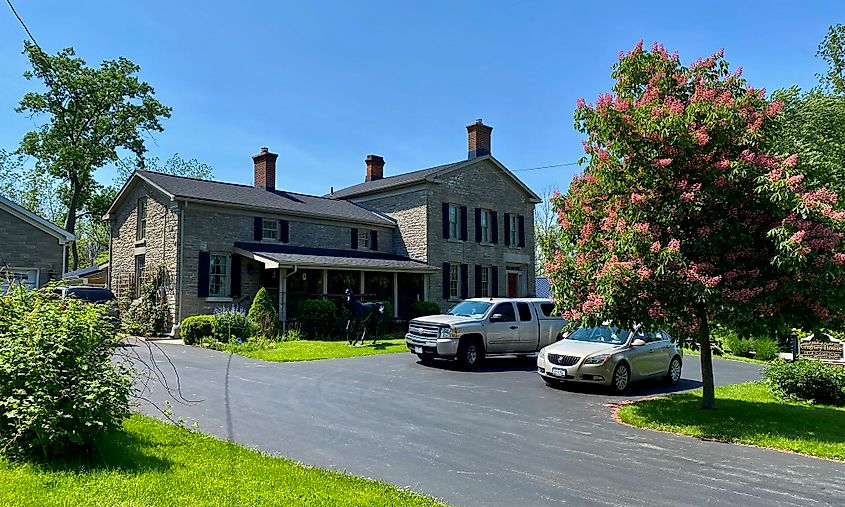
Lockport is defined by its engineering history. The town was carved into national memory by the “Flight of Five” locks on the Erie Canal, a 19th-century innovation that allowed boats to climb the Niagara Escarpment. Today, remnants of that infrastructure are still operational, and canal tours pass directly through the locks. Lockport’s population has remained under 25,000 for decades, and median home prices are consistently below the New York State average, currently around $256,908. Most homes sit on deep lots with mature trees, and property taxes remain comparatively low across Niagara County.
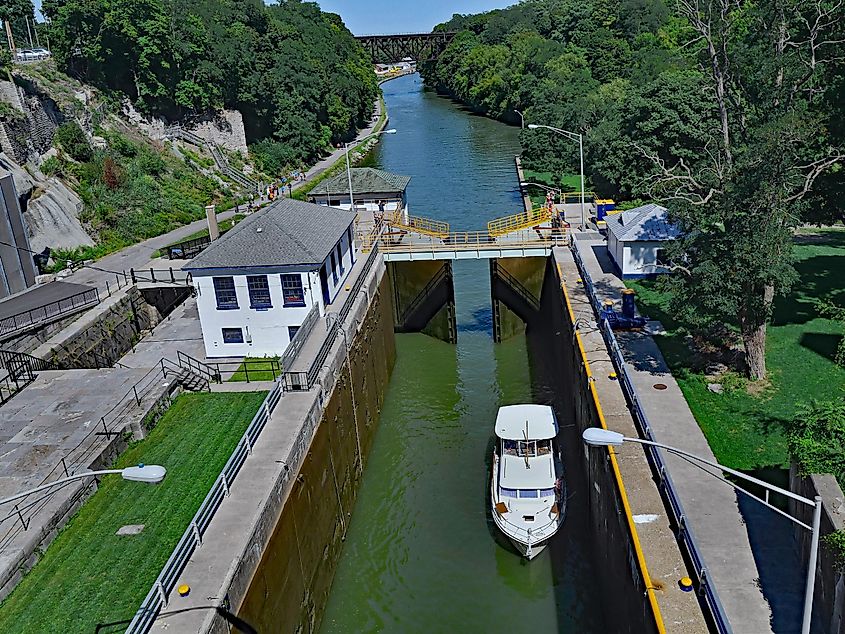
Along Main Street, Steamworks Coffee roasts in-house and shares space with a local artisan gift shop. The Kenan Center houses a 19th-century mansion, a gallery, and a small performance arena, most active in spring and fall. Cornerstone CFCU Arena operates two indoor rinks and offers senior skating hours throughout the week. In summer, retirees often gather at Widewaters Marina for fish fry specials and free concerts at the pavilion. Lockport’s preserved canal structures and proximity to both Buffalo and the Niagara wine trail add to its long-term value for budget-conscious retirees.
Oswego
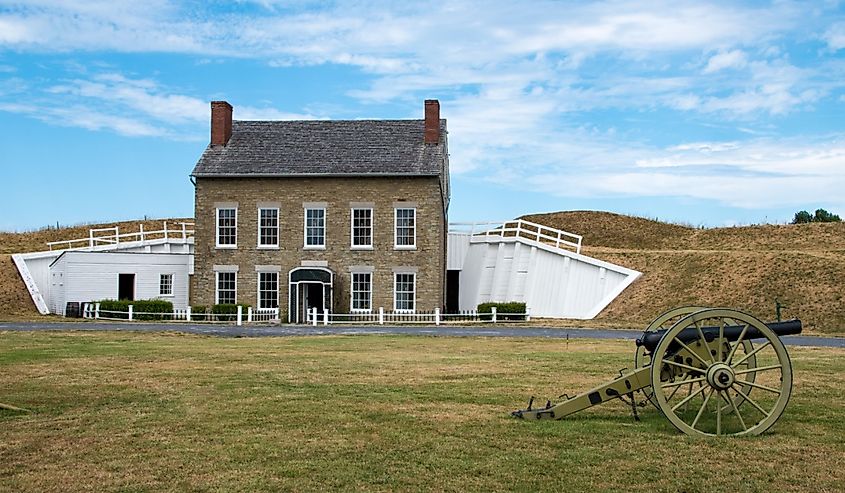
Oswego faces west onto Lake Ontario, one of the few New York towns where you can watch the sun set over open water. It has long been a port city, and remnants of its shipping past still shape the shoreline, grain elevators, breakwalls, and iron bridges frame the harbor. Fort Ontario, a star-shaped stronghold used during multiple American wars, overlooks the lake and remains intact, complete with stone ramparts and officers’ quarters. The median house price is $183,163, with a large supply of two- and three-bedroom homes built before 1940. Most sit within walking distance of downtown or the waterfront.
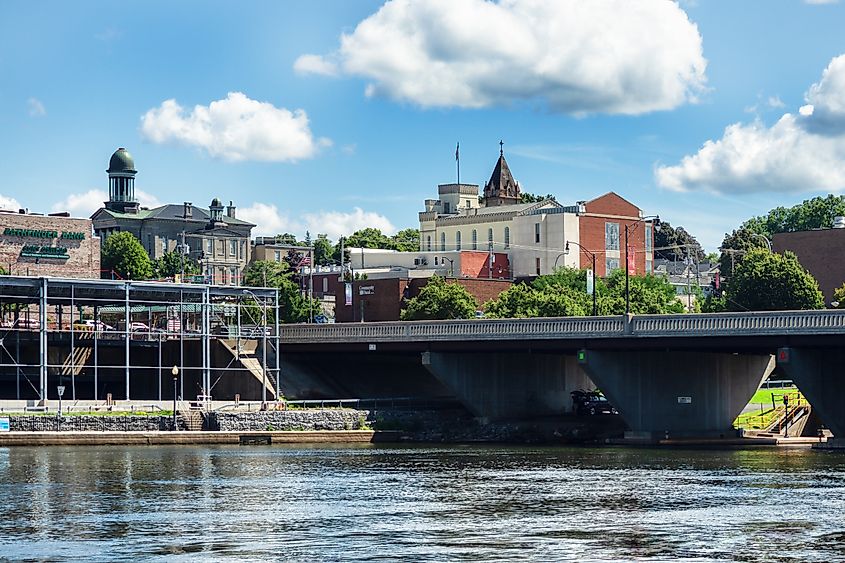
Breitbeck Park spans the lakeshore with paved trails, picnic shelters, and benches angled toward the water. The H. Lee White Maritime Museum offers exhibits on Great Lakes shipping and maintains the LT-5 tugboat, a D-Day veteran docked in the harbor. Oswego Tea Company, housed in a converted factory, serves lunch and small-batch coffee and doubles as a local grocery. Rivers End Bookstore on West Bridge is stocked with regional titles and hosts regular author talks, often tied to SUNY Oswego faculty.
Watertown
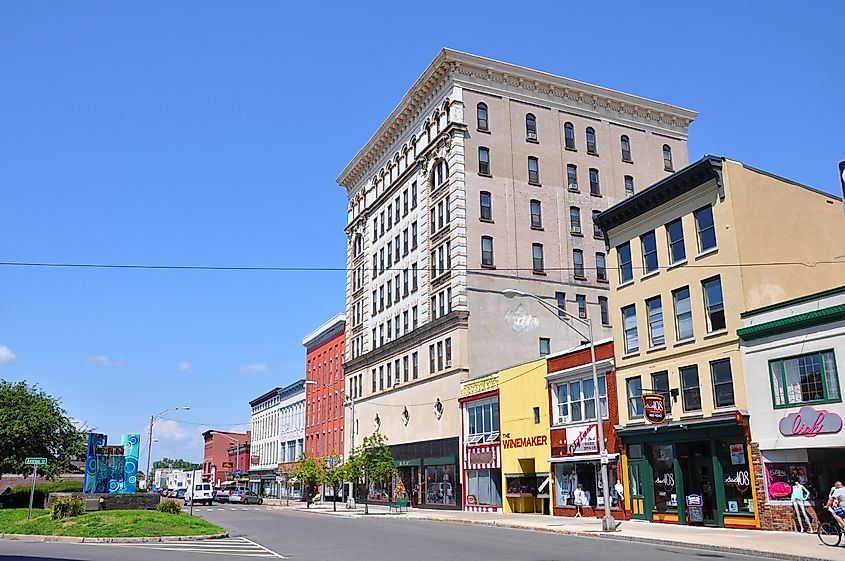
Watertown was built around waterpower. The Black River, fast and unnavigable, cuts straight through downtown and once powered dozens of paper mills. That industrial core has faded, but the infrastructure remains, stone factories converted to housing, brick warehouses lining the river’s edge. Watertown also sits just south of the Fort Drum military base, which shapes the local economy and keeps housing turnover consistent. Home prices remain well below New York State’s median (median house price of $195,763), and many single-story homes sit on deep lots with mature trees and minimal traffic.
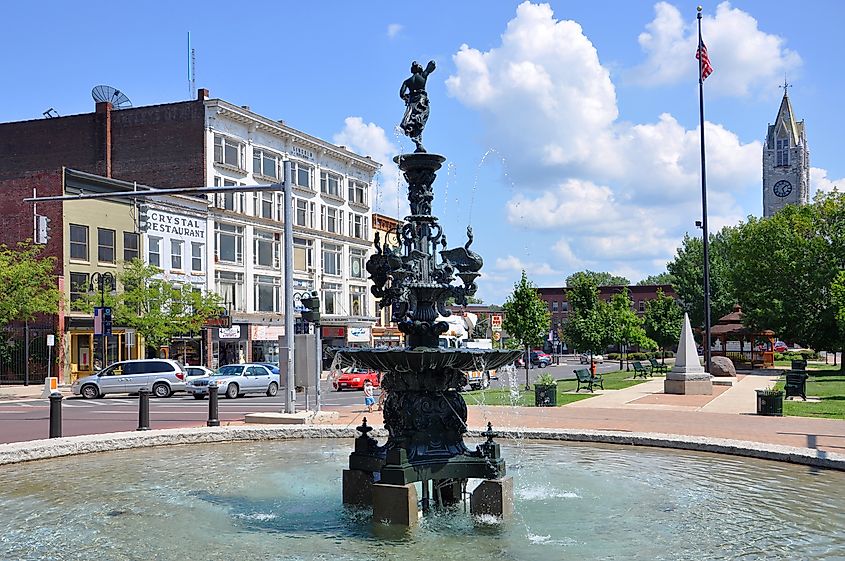
Thompson Park, designed by Frederick Law Olmsted’s firm, spans over 600 acres with open lawns, winding drives, and the New York State Zoo at its edge. The zoo focuses on native species, including black bears, otters, and bald eagles. At Vito’s Gourmet, retirees gather early for espresso and breakfast sandwiches made to order. The Salmon Run Mall, though modest, includes a multi-screen theater and anchor stores. The Black River’s eastern edge offers whitewater rafting in summer and a paved walkway that’s popular for birdwatching. Watertown’s location, twenty minutes from the Thousand Islands and close to Canada, adds cross-border access and seasonal tourism without raising living costs.
Plattsburgh
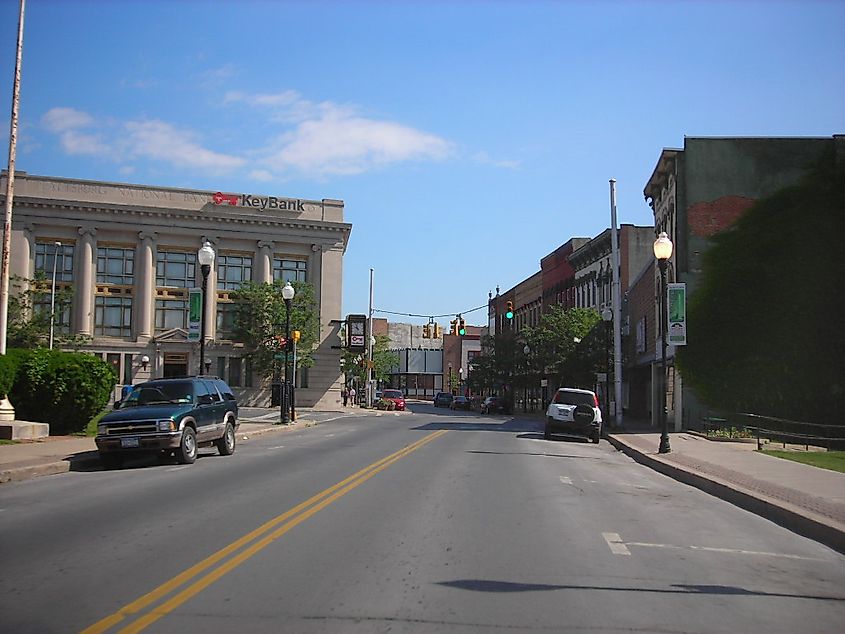
Plattsburgh’s shoreline sits on the western edge of Lake Champlain, with views that stretch across to Vermont’s Green Mountains. It’s one of the few towns in New York with a direct connection to both a Revolutionary War battlefield and a Cold War missile site, Plattsburgh Air Force Base operated here until 1995, and much of its housing stock and road grid still reflects that era. The town’s military legacy kept development practical and dense. Median home prices hover around $240,731, and housing turnover is steady due to the presence of SUNY Plattsburgh and seasonal second-home owners.
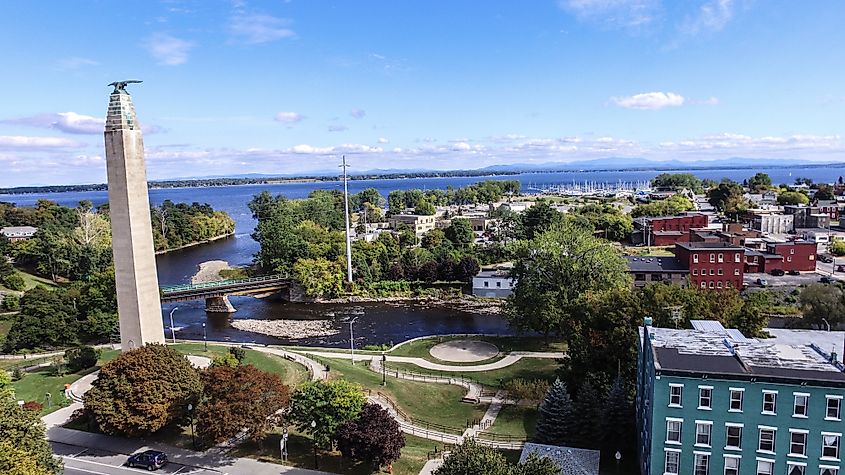
Plattsburgh City Beach runs for over a mile along the lake and includes lifeguards, a boat launch, and seasonal concessions. The War of 1812 Museum near the waterfront includes original uniforms, flags, and a topographical diorama of the Battle of Plattsburgh. Koffee Kat Espresso Bar on Margaret Street draws regulars for its maple lattes and live poetry nights. The Kent-Delord House, preserved with original furniture, offers a guided look at upper-class life from the 1800s. Amtrak stops downtown, and ferries to Vermont run seasonally.
Geneva
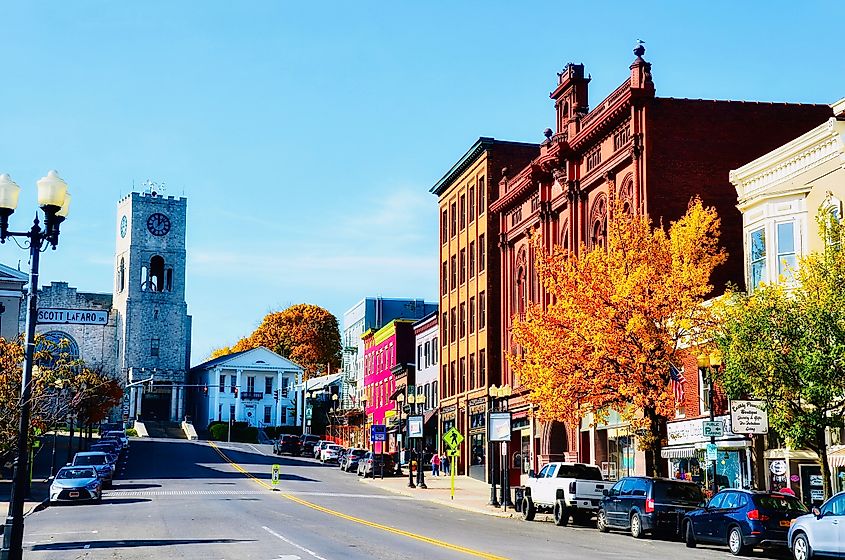
Geneva sits at the northern tip of Seneca Lake, where vineyards start to climb the hills and the lake begins to narrow. The town is shaped by two institutions, Hobart and William Smith Colleges and the New York State Agricultural Experiment Station, both of which influence housing, public programs, and local dining. Despite this, Geneva has kept its housing prices below the state median at around $217,473, with a range of early 20th-century homes and duplexes clustered around South Main and Castle streets. The downtown corridor remains compact, with the lakefront less than a 10-minute walk from most neighborhoods.
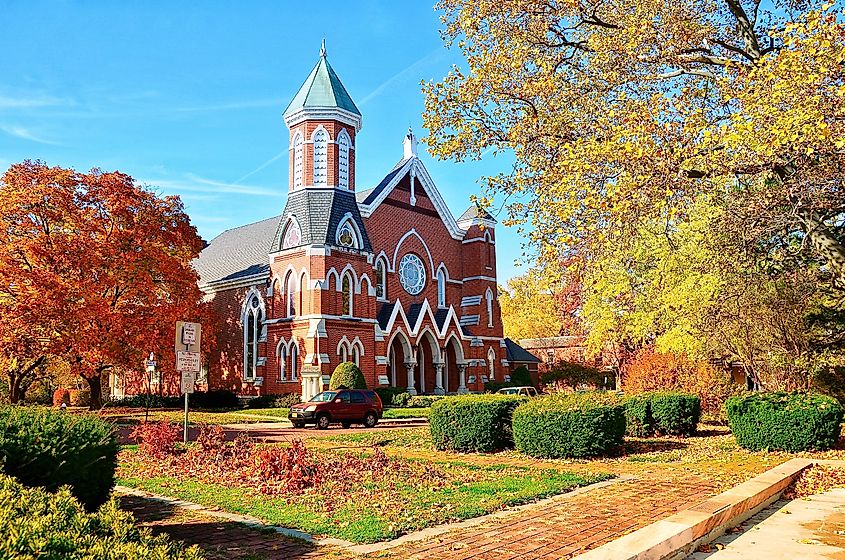
Seneca Lake State Park includes a paved walking trail along the water, a fishing pier, and a sprayground that runs in summer. The Smith Opera House, built in 1894, hosts live performances and art house film screenings. Kindred Fare on Hamilton Street serves a fixed-price, rotating dinner menu with a focus on Finger Lakes produce. The Geneva History Museum, housed in a Greek Revival home, maintains exhibits on canal development and 19th-century domestic life. On Saturdays, retirees gather at the Geneva Farmers Market, where local cheese, cider, and vegetables are sold directly by the growers.
Batavia
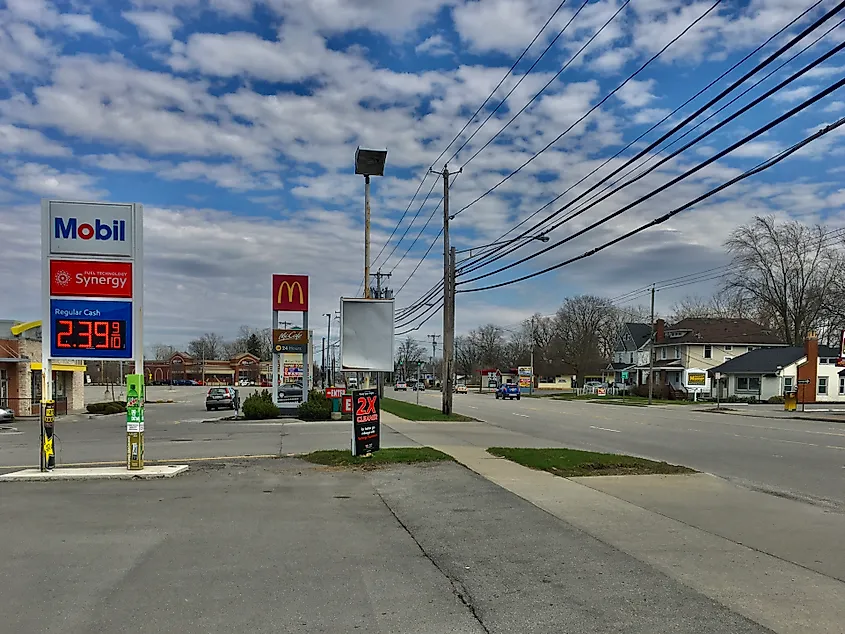
Batavia was once the headquarters of the Holland Land Company, the agency that brokered much of Western New York’s early land sales. Its office, built in 1815, still stands downtown and now houses the Holland Land Office Museum, containing original deeds, surveying tools, and early settler records. The town’s grid remains compact, with most services and public buildings clustered near Main Street. Housing prices, at around $198,030/house, sit well below the New York State median, with a large share of single-family homes built between 1920 and 1960. Retirees benefit from low traffic volumes, flat terrain, and access to both Rochester and Buffalo within an hour’s drive.
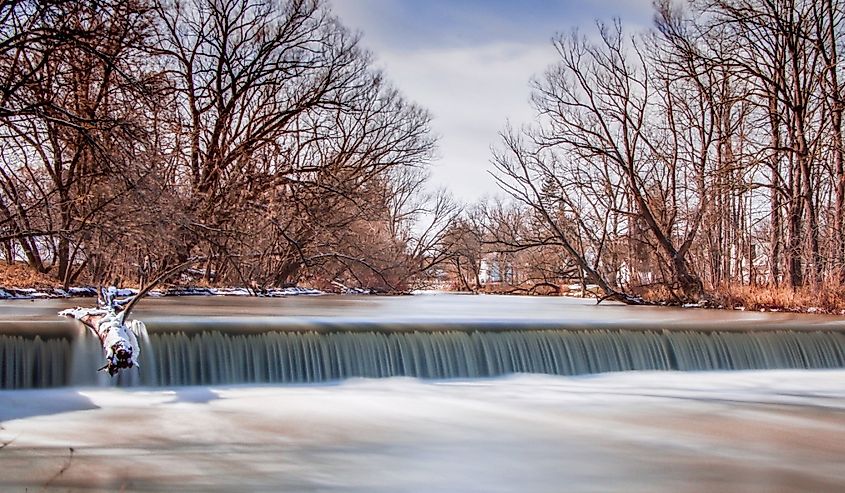
The DeWitt Recreation Area, once a gravel pit, has been converted into a stocked fishing lake with looped trails and picnic spots. Batavia Downs Gaming & Hotel, just off Park Road, operates a harness racing track and casino with regular live music events. For lunch or coffee, Eli Fish Brewing Company on Main serves its own beers alongside a small menu of rotating vendors inside the FreshLab food hall. T.F. Brown’s, a diner with a bowling alley in back, remains one of the town’s busiest all-day restaurants.
Watkins Glen
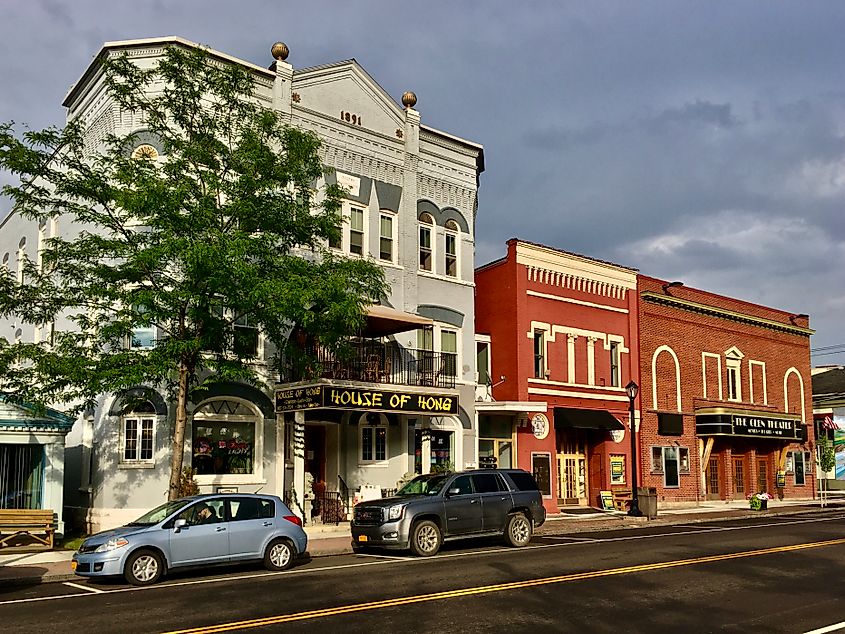
Watkins Glen is built into the base of a narrow gorge, where Glen Creek cuts through 400-million-year-old shale and sandstone. The town became known in the 1940s as the birthplace of American road racing, hosting events through its village streets before the creation of Watkins Glen International. That racetrack still operates today, but the residential core has stayed quiet and compact. Median home prices, hovering around $231,956, remain well under New York State’s average, with modest single-story homes lining the hillside streets above Seneca Lake. Retirees benefit from walkability, limited through traffic, and a direct connection to Finger Lakes wine country.
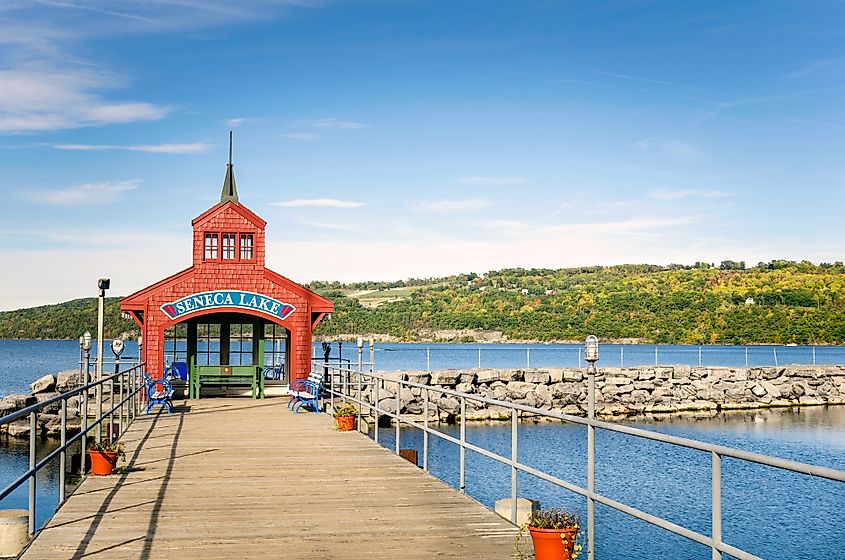
Watkins Glen State Park begins at the edge of downtown and features 800 stone steps winding past waterfalls, pools, and rock bridges, open spring through fall. The Seneca Harbor pier runs out over the lake and offers seating, seasonal boat tours, and views of the surrounding vineyards. Racing fans visit the International Motor Racing Research Center, which maintains original track maps, vintage posters, and driver records.
New York’s practical retirement towns share one equation: stable housing, compact services, and identities anchored by places, not slogans. Whether it’s IBM-era carousels in Binghamton, canal locks in Lockport, or stone steps at Watkins Glen, value ties to everyday access, parks, clinics, groceries, and transit, not speculation. The right setting fits an established routine; a prudent budget protects cash flow, and the town’s strengths do the heavy lifting over time for retirees.
